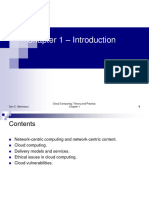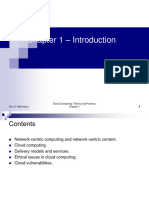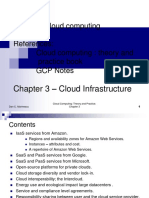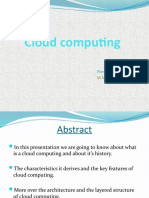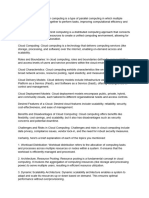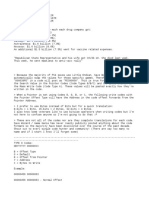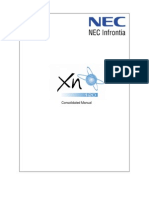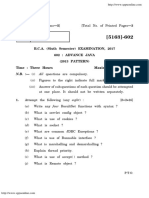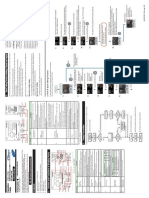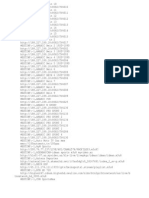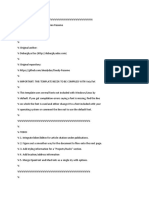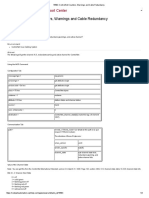0% found this document useful (0 votes)
33 views23 pagesCloud Computing Chapter4
Chapter 4 of 'Cloud Computing: Theory and Practice' discusses the challenges and architectural styles for cloud applications, emphasizing performance isolation, reliability, and latency issues. It introduces workflows and coordination mechanisms, including the MapReduce programming model and a case study on the GrepTheWeb application, which demonstrates scalable, on-demand infrastructure. The chapter also covers ZooKeeper for distributed coordination and various workflow patterns essential for managing complex processes in cloud environments.
Uploaded by
nairakash2004Copyright
© © All Rights Reserved
We take content rights seriously. If you suspect this is your content, claim it here.
Available Formats
Download as PDF, TXT or read online on Scribd
0% found this document useful (0 votes)
33 views23 pagesCloud Computing Chapter4
Chapter 4 of 'Cloud Computing: Theory and Practice' discusses the challenges and architectural styles for cloud applications, emphasizing performance isolation, reliability, and latency issues. It introduces workflows and coordination mechanisms, including the MapReduce programming model and a case study on the GrepTheWeb application, which demonstrates scalable, on-demand infrastructure. The chapter also covers ZooKeeper for distributed coordination and various workflow patterns essential for managing complex processes in cloud environments.
Uploaded by
nairakash2004Copyright
© © All Rights Reserved
We take content rights seriously. If you suspect this is your content, claim it here.
Available Formats
Download as PDF, TXT or read online on Scribd
/ 23






